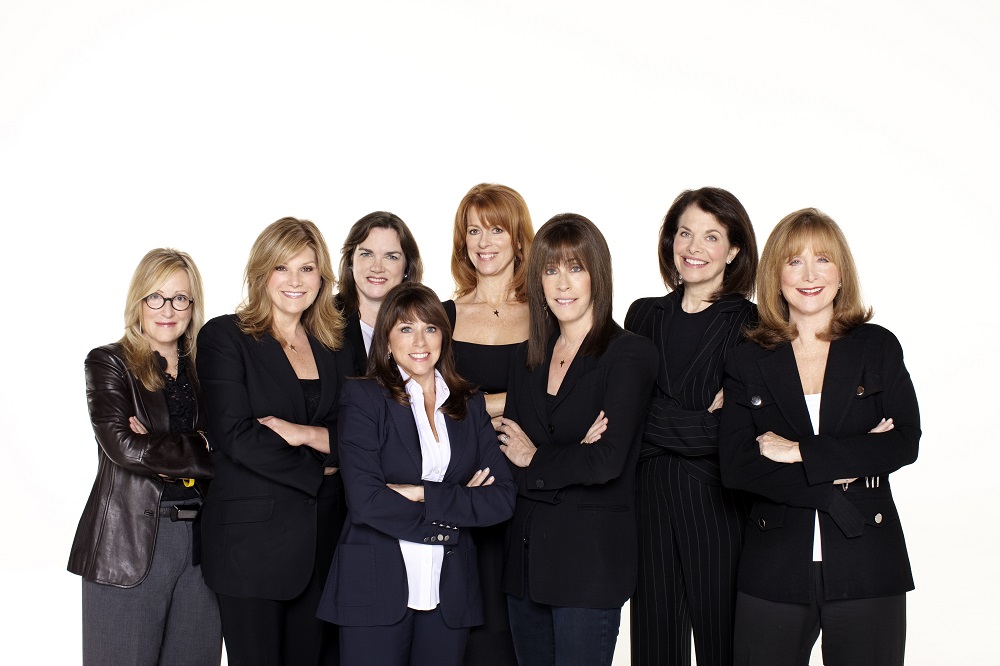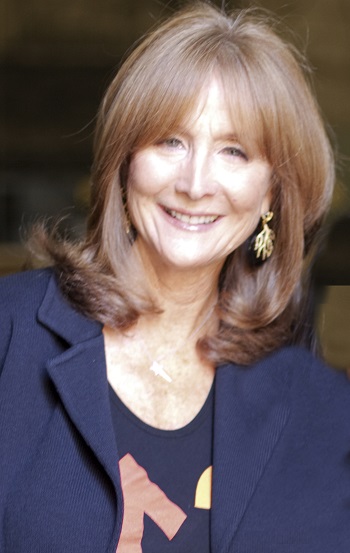Stand Up To Cancer was conceived by a group of indomitable women with a singular vision to raise money for cancer research by simplifying the fundraising model. Their forward-thinking model reimagined the traditional silo approach by providing funding over a three/four-year basis to collaborative, multi-disciplinary teams.
The innovative approach aptly branded “Dream Teams” has donated hundreds of millions of dollars since 2009 and shows no signs of slowing down. In fact, the success has been staggering with over 1200 scientists participating in SU2C-funded research and over 170 clinical trials funded by SU2C planned.
Co-founder and life force, Rusty Robertson, discusses the key to the organization’s enormous success which lies deeper than the model itself. Two keys to their success are commonly conceived, yet poorly executed: collaboration and celebrity endorsement. After 10 years of being a brand rockstar, Rusty will give her approach to successful collaboration and celebrity endorsement. We couldn’t wait to hear what’s next!
This interview has been edited for length and clarity.

Brandingmag: In 2007, Stand Up To Cancer was conceived by a group of fearless women who had been affected by cancer and believed that by leveraging entertainment and utilizing a forward-thinking funding model, greater strides could be made. Talk to me briefly about the uniqueness of that model? Also, why is it important for brands to think of creative ways of solving older problems?
Rusty Robertson: Brands have always had to be creative, but in this world we live in it’s harder to get a message out even though there are so many more avenues by which to reach people. Almost too many. The beauty of Stand Up’s model is how truly simple it is. For decades, cancer researchers worked in silos, often competing with each other to secure a variety of funding to better understand cancer, and create more effective treatments.
Stand Up To Cancer’s unique model was designed to provide substantial funding over a three- to four-year period to collaborative, multi-disciplinary teams of researchers from multiple institutions. The Stand Up To Cancer Dream Teams are focused on “translational” research. What does this mean to a cancer patient? We bring treatments from the bench of a scientist to the bedside of a patient more quickly. The real differentiating point is that Stand Up mandates that the scientists collaborate, meet, and share their data in real time like never before.
SU2C also funds early career researchers in cutting edge, “high risk” research with potential for “high reward.” We like to affectionately refer to these young researchers as our garage bands. The grants are quite substantial, sometimes preventing closure of researchers’ labs. Imagine, these researchers will be the next generation of leading cancer researchers and innovators!
Bm: Since inception, the success has been staggering. Over $481 million pledged, over 1200 scientists participating in SU2C-funded research, and over 170 clinical trials funded by SU2C planned. First and foremost, congratulations on the massive success. What three factors do you think led to the success? What are the key characteristics of a successful brand?
 RR: Stand Up is proud to have established a model for cancer research that is innovative, effective, and well respected in the research community. Cancer scientists want to be part of this community. It’s much more than a sense of belonging, it’s the larger meaning of innovation and collaboration, and a vision of more cancer patients becoming cancer survivors that’s generating results, faster. Having Dr. Phil Sharp chair our Scientific Advisory committee is so important to our success.
RR: Stand Up is proud to have established a model for cancer research that is innovative, effective, and well respected in the research community. Cancer scientists want to be part of this community. It’s much more than a sense of belonging, it’s the larger meaning of innovation and collaboration, and a vision of more cancer patients becoming cancer survivors that’s generating results, faster. Having Dr. Phil Sharp chair our Scientific Advisory committee is so important to our success.
Each year, SU2C holds a Scientific Summit, bringing together scientists from all of its teams to report on their outcomes and continuing progress. This is the who’s who of cancer researchers. Picture these scientists all gathered in a room. It’s incredible to watch as they collaborate and engage across teams. There is a palpable energy as seasoned research experts interact with SU2C’s young investigators.
A successful brand touches something innately personal with the public. The brand must answer, shine a light on, and quell a problem that must be solved. Our brand has become a movement.
The skill sets that the co-founders brought to Stand Up has been a blessed recipe for success. Our ability to use the power of the entertainment industry in journalism, film, TV, marketing, and philanthropy is exactly what our science model needed to help get the word out. We made a promise in 2008 that every other year we would come back with progress. Having all the networks and affiliated cablers offering one free hour to share our progress for a disease is unprecedented. We can tell the public where 100% of their money has gone, highlight patient stories, and introduce scientists to the world in a way that literally makes cancer palpable and intriguing.
The SU2C brand is not just symbolic. Big – and good – ideas are rarely achieved in isolation. As a brand, collaborative cancer research has gained momentum, allowing other people to join in. At the outset of SU2C, collaboration was a core value and a goal to achieve, but with the success of SU2C and experience of our country’s leading researchers, it’s now reproducible and universal. Just look to Sean Parker’s Institute for Cancer Immunotherapy or Vice President Biden’s Moonshot to see how collaboration is now essential in the current fabric of cancer research.
Bm: Stand Up To Cancer recently partnered with Lustgarten Foundation Research Team Aims to Apply CAR T-cell Therapy to Pancreatic Cancer. The team will receive $2 million in funding, with $1 million coming from SU2C and $1 million from the Lustgarten Foundation for Pancreatic Cancer Research, the largest private foundation dedicated solely to funding pancreatic cancer research. What are three factors that make a successful partnership?
RR: Yes, it’s very exciting that we just announced this collaboration with The Lustgarten Foundation, but it’s actually our fifth collaboration together! The Lustgarten Foundation provided supplemental funding to one of our inaugural Dream Teams, the SU2C Pancreatic Cancer Dream Team. Since then, Lustgarten has continued to collaborate with SU2C on two Dream Teams: our new “Convergence” approach to cancer research bringing together clinical and computational experts, as well as on an upcoming team focused on “Cancer Interception” (which seeks ways to diagnose pancreatic cancer before it fully forms and proactively intercede to stop the cancer from progressing). The currently funded teams include:
- SU2C-Lustgarten Foundation Pancreatic Cancer Dream Team: Transforming Pancreatic Cancer to Treatable Disease
- SU2C-Cancer Research UK-Lustgarten Foundation Pancreatic Cancer Dream Team: Reprogramming of Transcriptional Circuitry to Control Pancreatic Cancer
- SU2C-National Science Foundation-Lustgarten Foundation-V Foundation Convergence Team: Liberating T-cell Mediated Immunity to Pancreatic Cancer
The success of our collaboration extends beyond our shared goal to fund research that stops pancreatic cancer from taking lives. SU2C and Lustgarten share in decision-making regarding the scope of the research to be supported; selection of the candidate research projects to be funded; and the formal, semi-annual review of the research teams. This year, SU2C and Lustgarten initiated a common-review meeting for all pancreatic teams involved in the SU2C research portfolio to ensure that there is awareness and collaboration across these teams. In addition to sharing their interim progress and data, work plans are coordinated to make sure there’s no duplication of efforts. This effort also engages early investigators, magnifying their opportunity to present to and interact with the senior scientists across the teams.
Bm: Stand Up To Cancer has been remarkable in their ability to leverage the power of entertainment and celebrity. Why has that strategy been so successful? What factors are most important for a brand when looking for a celebrity endorsement?
RR: We, the founders, are all involved in the entertainment industry. We use our power to get our messaging out. Stand Up To Cancer is tremendously grateful for the support of the entertainment community. The first telecast in 2008 was carried in a “roadblock” by the three major networks in the United States. Flash forward to 2016 and more than 60 broadcast networks, cable networks, and streaming services carried our telecast in the US and Canada. We benefit from an amazing array of TV and radio providers as well as newspapers, magazines, and online media carrying our public service announcements (which have generated over 39 BILLION media impressions since their inception).
Incredibly, more than 600 celebrities have supported Stand Up To Cancer as ambassadors. Our celebrity ambassadors are generous in sharing their personal connections. When cancer patients and their families hear that celebrities have traveled the cancer journey themselves or with loved ones, they feel a personal connection and their message resonates. It’s authentic and each celebrity ambassador is touched by cancer in one way or another.
Bm: There has definitely been a convergence of profit and philanthropy as it relates to brands. Do you see the trend continuing? If so, why?
RR: Absolutely! Through our tremendous relationships with our founding donor Major League Baseball to MasterCard, CVS Health, American Airlines, Rally Health, Genentech, as well as a wide array of consumer products, stores, and events, we have learned that corporations want to do well while doing good. Stand Up To Cancer has changed the culture of corporate giving. We have not only activated corporate consumer bases, but we have also activated their employees to spread our voice and raise awareness of our cause. And, with that, we have been able to fund the hundreds of researchers that work tirelessly to fight this disease.
Bm: Trademark question: What’s next for the brand?
RR: This spring Stand Up To Cancer will be celebrating our tenth anniversary! Can you believe it? SU2C continues to innovate cancer research, as seen with our Convergence and Interception research initiatives.
Cancer research is making incredible breakthroughs in understanding the disease at the cellular level. It’s no longer how we diagnose or treat the cancer of a particular organ, but how we diagnose and treat, in a precise way, cancers associated with particular genetic mutations or bio-markers.
With the same drive and passion that helped us start this movement, we will continue to forge new frontiers in cancer research and make cancer patients cancer survivors.
Our plan is to create community activations across the US and the world. And we want to embrace the most cutting edge programs to do this. We are expanding a series to educate, motivate, inspire, and help navigate the cancer journey for patients and their caregivers.

